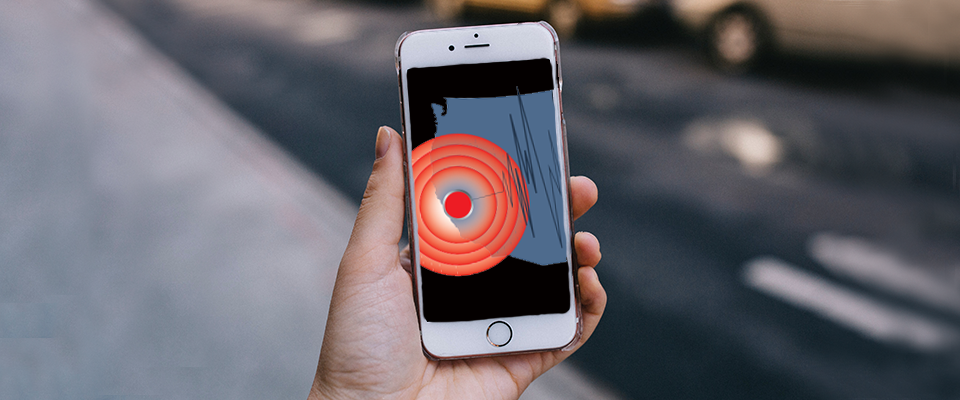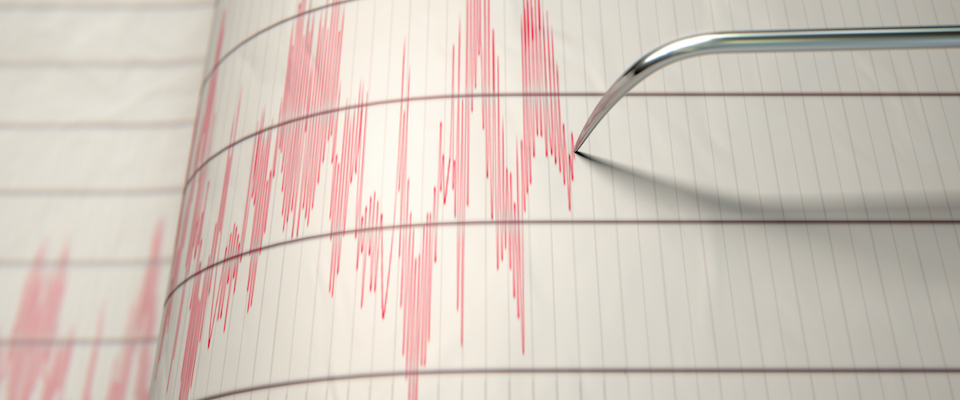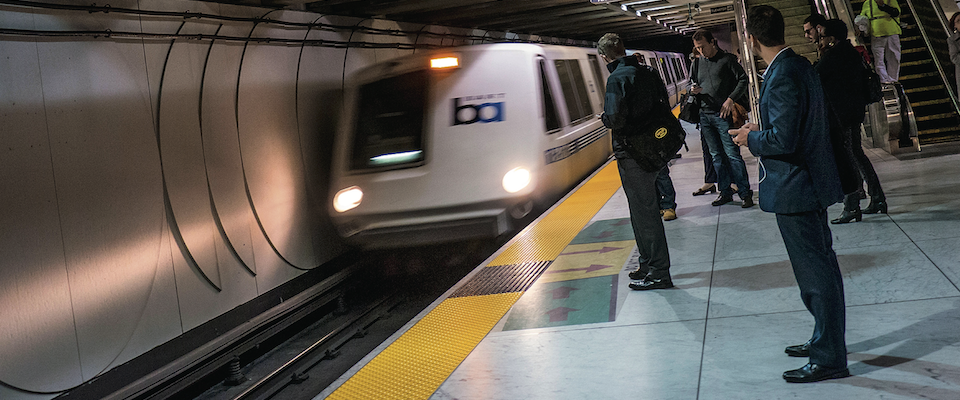Saving your life when the Big One finally rocks California? Yeah, there’s an app for that.
There will be soon, anyhow, if Richard Allen has his way. The director of the Berkeley Seismological Laboratory, Allen has been a leading researcher and proponent of earthquake early warning systems. These networks of sensors and communication devices are designed to give train operators, nuclear power plants, surgeons, and seismophobic citizens a few precious seconds’—or even a minute’s—lead-time to get ready for the coming seismic waves.
The question now is whether Sunday’s American Canyon quake—the most recent reminder of California’s vulnerability to its subterranean fault lines—will be sufficient to spur state funding for the warning program.
In a presentation at the World Science Forum in Rio de Janeiro last year, Allen had announced that as soon as 2014, these systems may have yet another tool to better forecast and forewarn coming quakes: the smartphone in your pocket. He said the approximately one billion smartphones around the planet could revolutionize the way in which earthquake warnings are calculated and delivered.
“MyShake”—software that he and his colleagues at the Berkeley lab have developed to convert smartphones into mobile seismic sensors—was readied for field testing early this year.
“All we need is a telephone at the epicenter of the quake which detects it and sends the information (saying), ‘I felt a jolt, I am in this place’ to a server,” he told the audience in Rio.
Current earthquake early warning systems such as ShakeAlert, the prototype system that Allen and his colleagues at the lab developed with the U.S. Geological Survey and a coalition of other university departments, use laboratory sensors strategically planted all around potentially troublesome fault lines. By measuring seismological shocks and slight shifts in GPS data in real-time, the sensors are able to estimate the size of earthquakes as they happen and the speed at which the destructive “s-waves” travel. Because s-waves travel at roughly 3.5 kilometers per second, a sensor connected to a server can give about ten seconds of warning for every 20-mile increment that separates the forewarned person or institution from the quake epicenter.
At the Berkeley lab, the ShakeAlert system provided 10 seconds of warning before Sunday morning’s estimated 6.0 quake centered near Napa, as this University of California video demonstrates:
A simulated ShakeAlert response to the Loma Prieta earthquake shows, with jarring audio, how the “s-waves” take a full 27 seconds to radiate from the epicenter in Santa Cruz country to the UC Berkeley campus. With proper warning, those are 27 seconds in which faculty could duck beneath desks, chemistry students could put down their flasks, and campus emergency responders could prepare themselves.
But by harnessing the accelerometers and GPS devices that come in store-bought smartphones, seismologists have the potential to vastly expand these emergency response networks.
“There are many countries, especially in the developing world, that don’t have the resources and don’t expect to have the resources to develop a traditional seismic networks,” Allen told us over the phone. “But there is a rapidly expanding smartphone and cell phone user base the world over.”
Even so, don’t expect to find MyShake in the iTunes store anytime soon. According to Allen, while they have successfully programmed the phones to predictably measure earthquakes exceeding 5.0 magnitude, they have yet to fine tune “the backend”—that is, the server that can collect all the real-data, access whether a quake is actually taking place, calculate its magnitude, and then send a timely warning to all registered parties.
The rub, of course, is that in order to “teach” the server to accurately analyze and respond to earthquakes, you need to show it what earthquake data looks like.
“The challenge is that because (the phones) are less sensitive than traditional sensors, we can’t test them with smaller earthquakes,” Allen explains. Rather than wait for the next big quake to provide their raw data, the team has been making use of “shake tables,” along with other novel earthquake simulators. Even so, says Allen, the team has “a long way to go.”
Even so, Allen says he is excited about the potential of such a development, which would be a boon for more than just poor countries with poor seismological infrastructure. Even in California, where ShakeAlert is already used by BART to stop trains in the event of a major earthquake, sensor capacity and funding are both limited.
Allen has urged state and federal lawmakers to get serious about earthquake readiness. “California has a 99% chance of experiencing a quake of at least magnitude 6.7 (the size of the 1994 Northridge earthquake near Los Angeles) in the next 30 years,” he wrote in the journal Nature in October. “When the magnitude-9 Tohoku-Oki earthquake hit the northeast of the country in March 2011, an automatic warning was issued within seconds. Trains stopped, students took shelter under desks, sensitive manufacturing equipment was paused and hazardous chemicals were isolated. Lives and money were saved. China, Taiwan, Mexico, Turkey and Romania also issue earthquake alerts. The US public deserves access to warnings too.”
Last September, California Gov. Jerry Brown signed Senate Bill 135, which mandated the development of a comprehensive, state-wide early warning system. But the bill did not specify how such a program would be funded, and funding for the system “has not been found.”
“If we were to have a major earthquake today, they would allocate the funding next week,” Allen told us late last year. “The technology has been proven. The applications have been demonstrated. It’s simply an issue of deciding to fund it.”
And here is another benefit of converting ever-ubiquitous smartphones into sensors: not only would those warnings could be much more precise and much more effective, they also would be cheaper. In a recorded lecture last April at Berkeley’s Center for Information Technology Research in the Interest of Society, Allen touched upon this possibility.
“The potential here is huge. In California there are currently 16 million smart phones. We’re currently using 400 stations for our early warning system. That’s quite an increase!”





















